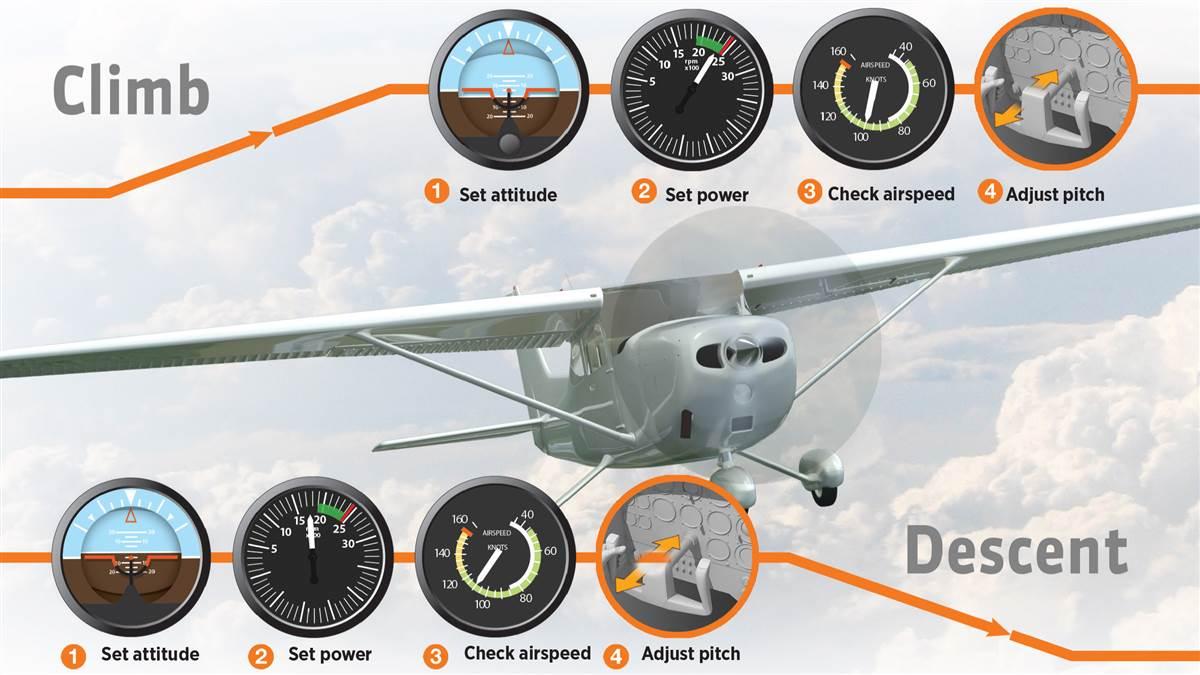Technique: Constant airspeed climbs and descents
Start with attitude

Climbing and descending at a constant airspeed is an important first step in flying a good traffic pattern, planning cross-country climbs and descents—and most important, as a path to more precise flying and aircraft control.
Set the attitude. Begin by setting the aircraft attitude that you think will result in your desired airspeed. Don’t know what that looks like? Think about climbing after takeoff. If cruise in your airplane is 120 knots and best rate of climb (VY) is about 80 knots, use half the climb attitude to reach 100 knots. You can adjust later.
Set the power. To climb, add power. To descend, decrease power. You know that already. Any sustained climb will require full power, and most controlled descents start with a reduction of anywhere between 300 and 600 rpm.
Check the airspeed. Only once you’ve set the attitude and power should you verify how your inputs have affected airspeed.
Make adjustments. Most likely you’ll need to make adjustments, but they will be small. Start by making a change to the airplane’s attitude, and then verify with airspeed. Don’t start with chasing the needle on the airspeed indicator.



